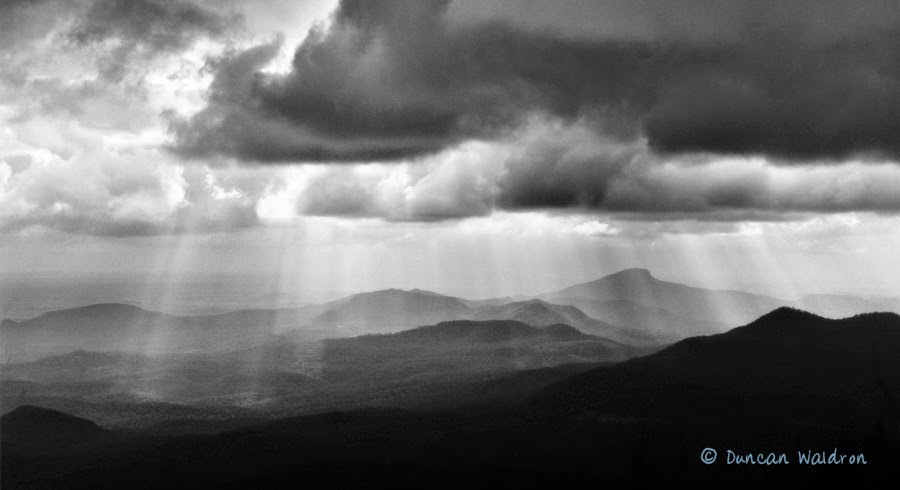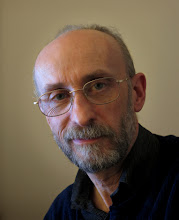There has always been a bit of a left-of-centre* streak in my photography, albeit with plenty of straight-down-the-middle conventionalism to balance. I studied photography in a 3-year diploma course, specialising in applied photography in my final year, and encountered all sorts of photographic possibilities along the way. That course led me into employment at the Royal Observatory, Edinburgh; not your average job for a freshly-minted young photographer. (* When I say 'left-of-centre', I suppose I should say 'right-of-centre' as well, since I dabble with 3D stereo pairs, but that's another matter; you can investigate here.)
As an aside, whenever I use film these days, the smells take me right back to 197X; they were just an incidental part of the photographic process until the 90s, but now they are an incredible nostalgia trigger. I should get a bottle of Paterson Acutol, just so I can open it for a sniff every now & then. (I don't miss the benzene-based colour chemistry of the 70s & 80s; it just smelt psychoactive.)
So, how did my left-of-centre radicalism manifest? Often, it was just through taking a shortcut to a result, such as shooting a pic on a cut-down sheet of enlarging paper, rather than load a whole film. Or processing in a developer not intended for the job, just because it was available. Sometimes though, I'd shoot pictures with the question 'what if?' in mind. I was always an advocate for the idea that, never mind what the rule book says, have a go, and see what works. I suppose it's surprising, given that attitude, that I never took to cross-processing, but there you go. I wouldn't want to be predictable, would I?
These days, as well as doing less and less photography as time goes by, I use traditional materials on a very infrequent basis. One thing that does get me loading a camera with light-sensitive silver-based materials is pinhole photography. It is possible to do pinhole with digital, but the small sensor size—even if using a full-frame DSLR—is rather limiting, as is the field of view. So, when I see a piece about anyone using traditional materials, or cameras before electronics really took over, I'm immediately interested.
Pinhole photography is photography almost at its most basic (I'll allow that photograms are even more basic): no lens, no shutter, no aperture, no light meter, no viewfinder. Just photographer and instinct. In practice, I might use a hand-held light meter to gauge the right exposure, but it's not absolutely necessary, after a bit of experience. There is something very satisfying about creating a photograph without all that modern technology has to offer.
When I read of a project to create pinhole photographs with 100-year exposure times, I was therefore immediately interested. For a few years, folk have been creating solargraphs—year-long exposures that record the Sun's movement, both east-west and north-south. These photographs are taken using photographic enlarging paper, but are not developed in the normal way; instead, they are scanned as soon as the camera is opened, to record the image that has appeared on the light-sensitive material.
Now, somebody has come up with the idea that you could load a simple camera with black paper, and expose it for a hundred years to create a record of urban change during that period. Not black photographic paper, mind you, just black paper. Photographers, as well as scrapbookers, generally like the idea that a photograph will last for a very long time, if processed and stored properly. Cheap paper can contain acid from the manufacturing process, and will consequently not last for a very long time if exposed to light (the acid will also harm any other materials stored with it, but that's another story). Papers intended for archival use will last much longer, but ultimately, papers exposed to light—especially UV-loaded daylight—will fade or turn yellow, and that will be the mechanism that's relied upon in this project.
To anyone who has used that lovely material, Cibachrome, there may be a resonance here. Unlike every other photographic material where exposure, followed by development, created an image with either granular silver or colour dye, each Cibachrome print began with a sheet of enlarging paper that contained all the dyes already in place; it looked brown before exposure etc. The technical beauty of Cibachrome (for me) was in the process of developing a silver image and then bleaching that image and the dyes associated with it, leaving only the dyes that weren't affected by the exposure, leaving a direct positive image (it was used for printing from colour slides, not negatives). (It also meant that the image was sharper, as the dyes in the unexposed emulsion limited light scatter.)
I just loved the brilliance (both literal and metaphorical) of the Cibachrome method, and thought that it had been discontinued years ago, after it had been renamed Ilfochrome; however, the Ilford site says that it is still available. This chap seems to think that it was on the way out, and shows the material being used for original in-camera photography, rather than for printing.
The point about that apparent digression is that the photographer behind this project is using black paper, which should gradually be bleached away to a positive image; or so the theory goes. There are many questions, of course, about this project: will the cameras still be there in 100 years; will the exposures actually work; will the images be worthwhile, in any broad sense of the word? If all goes to plan, it might make for a fascinating exhibition/book/blog post; it if fails, then likely very few people will notice or care … but I suspect that's art for you.
Read about the project here: petapixel.com/2014/05/09/100-cameras-will-photograph-berlin-ridiculous-100-year-exposure-times/





















